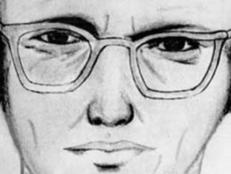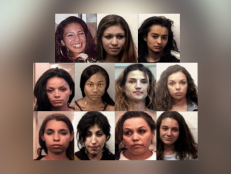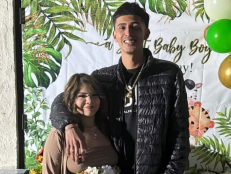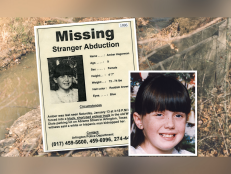Dean Corll: Can You Help ID This Photo That May Be the Serial Killer's 29th Victim?

Harris County Institute of Forensic Sciences
HOUSTON, TX — A disconcerting Polaroid of a seemingly handcuffed boy was found among the possessions of Elmer Wayne Henley, an accomplice of Dean Corll — a serial killer known as the “Candy Man” who, between 1970 and 1973, raped, tortured, and murdered at least 28 young males.
The photo has been under investigation to determine if the child pictured in it may be Corll’s 29th victim.

Dean Corll [Wikipedia]
While researching the Candy Man case for an upcoming movie, filmmaker Josh Vargas discovered the picture among materials that Elmer Wayne Henley’s mother had boxed up after her son confessed and had not touched for 40 years. According to Vargas:
“While rummaging through those pictures, this Polaroid falls out. I take a look at it and, right off the bat, having studied the case and the crime scene photos and everything, I see Dean’s toolbox, and I see his implements in that toolbox, and I see this kid right here with handcuffs on his arms.”
Working with the police, Vargas took the photo to Henley, who is serving life in prison. Henley said he didn’t remember that specific child, but that other victims are still out there that he hadn’t yet been able to identify.
When the case came to a sudden and violent end in 1973, the Houston-area Candy Man killings stood as the most grievous example of serial murder in America’s popular consciousness (that would change, of course, as the decade progressed).
Dean Corll came by his nickname because his family owned a candy factory, and he was known to be generous in handing out free samples to local youngsters. Tragically, Corll had ulterior motives. David Owen Brooks was among the kids to whom Corll supplied sweet treats. They met in 1967. Corll, who had just done a stint in the Army, was 24. Brooks was only 12. Their friendship lasted years and eventually turned sexual — as well as homicidal.
Beginning in 1970, Brooks worked with Corll in luring teenage males back to the Candy Man’s house. Once there, they “partied” with drugs and alcohol and the victims got tricked into putting on handcuffs. Rape and torture followed — some of it lasting for days — until Corll either strangled the captive or shot him point-blank with a .22-caliber pistol. Afterward, Brooks helped Corll dispose of the bodies.
Elmer Wayne Henley joined the horror in 1971. He was 15 years old. Originally intended to be a victim, Corll reportedly determined that the strapping teen would make another fine henchman.
Corll reportedly told Henley that he worked as a recruiter of a “white slave ring”operating out of Dallas. The Candy Man offered Henley $200 for every young male he could get back to their evil base of operations. Henley claimed that he initially ignored Corll’s offer but, after his family hit grim financial times, he relented.

David Brooks [Texas Department of Corrections]
Once it became clear, however, that Corll was only in it for pain and murder, Henley reportedly went right along and, it’s believed, proved to be particularly sadistic. In fact, he brought many of his own friends to Corll to be violated, tormented, and slaughtered.
This nightmarish operation continued until August 8, 1973, when Henley brought two more potential victims to Corll — but one of them happened to be female. This breach of pattern occurred five days after Corll killed 13-year-old James Dreymala, who would turn out to be the Candy Man’s final casualty.
Henley, then 17, convinced Timothy Kerley, 19, to hang out at Corll’s house. Along the way, they came across 15-year-old Rhonda Williams, a friend of Kerley’s who was upset because her father had just beaten her up. The guys invited Rhonda to join them.
Upon seeing a girl in his domicile, Corll flew into a rage. He took Henley aside and fumed that the teen had “ruined everything.” Regardless, Corll got the young trio deliriously intoxicated on alcohol and marijuana until they passed out. When they awoke, all three had been bound, gagged, and laid face-down on the floor.

Elmer Wayne Henley [Texas Department of Corrections]
Corll held a pistol to the back of Henley’s head and again expressed his fury over a female being present. Henley negotiated his way out of his bindings, telling Corll he’d help savage and murder the other two.
Once untethered, Corll ordered Henley to rape Rhonda Williams while he raped Timothy Kerley. Instead, Henley got hold of Corll’s gun and reportedly shouted, “You’ve gone far enough, Dean! I can’t have you kill all my friends!”
Henley shot Corll in the forehead. It didn’t kill him. Henley fired five more times. Those bullets did the job.
Elmer Wayne Henley and David Brooks eventually got sentenced to life behind bars for their participation in Corll’s deadly reign. Henley has long worked with authorities to locate and identify burial places and remains.
Brooks, somewhat surprisingly, is up for parole this year — a possibility being fought against by victims’ loved ones.
Along with authorities, movie director Josh Vargas is hopeful that discovery of the Polaroid will help close one more cold case. He told the press:
“Even if we abandon the film project today, the greatest news could get would be that at least something came of this. Maybe somebody may recognize their son or brother.”
If you have any information whatsoever regarding this photograph or the child depicted in it, please call the Harris County Institute of Forensic Sciences at (713) 796-9292.

Harris County Institute of Forensic Sciences
Unidentified photo from Elmer Wayne Henley’s possessions [Harris County Institute of Forensic Sciences]
To learn more about this case, watch the “Candy Man” episode of Investigation Discovery’s Blood, Lies & Alibis on ID GO now!
Watch Now:
Read more: Houston Press, Daily Mail, KTRK, KHOU, ThoughtCo





![David Parker Ray [screenshot from video]](http://investigationdiscovery.sndimg.com/content/dam/images/investigationdiscovery/crimefeed/legacy/2016/09/20160930_David-Parker-Ray-from-ABQ-Journal-video.jpg.rend.hgtvcom.231.174.suffix/1537471860647.jpeg)



